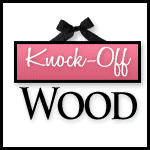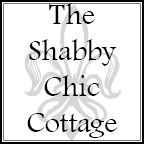i found a great deal on some terra cotta pots and had a vision for turning them into cool, sculptural useful items: a bird feeder and bird bath. click any picture for a larger version.
let's start with the pots. what a steal! first the big beautiful pots that i knew would make an excellent bird bath and a great feeder:




then, i knew i could use the traditional shaped terracotta pots as bases for the feeder and bath. they were even more of a steal!



here are some of the other supplies you'll need for this job:





- glue suitable for plastic, screen and terracotta
- screen material and scissors
- a plastic storage container and something to cut it with
- newspaper and paper plates
- a sanding block (optional)
- clorox wipes/a damp rag/damp paper towel/or anything to clean up terra cotta dust
- plastic/high adhesion primer
- spray paint in glossy white (1 or two cans, depending on your preference) and candy apple red (2 cans for sure to get a good solid color)
first, we'll make the top of the bird bath.
step 1: if there are any raised parts on the bottom of the bath, sand it to ensure that it is smooth so the plastic will have a flat surface to adhere to. be sure to wipe the dust off thoroughly and let the pot dry thoroughly. dusty and/or wet do not promote adhesion.
step 2: cut a piece of plastic from the container that's big enough to fit over the hole in the bottom of the bird bath (and seal the water in!) mine really was a little too big. i could have stood to cut some off from the long side.




step 3: place glue on one side of the plastic and the right spots of the bottom of the bath and let cure for the recommended time, according to the manufacturer's instructions. i used "house hold goop" but i would not recommend it. very messy, hard to get out of the tube, and even after you stopped squeezing the tube, it still kept coming out!
step 4: after curing, place the plastic in place on the bottom of the bath, then scrape away as much of the excess seeping out the sides as you can with anything that will work (i had an extra piece of plastic, so i used that). then, cover with a piece of paper towel and a paper plate (to make sure any excess glue wont get on whatever you are going to use to weigh the pieces down with. (which you should do to get the best, flattest bond. flat will be important later.






step 5: put something(s) with lots of weight on top of your paper plate. i used my remaining three pots. now just them them dry for 24 hours. (you might be able to get away with less, but i wanted to be sure.)

now it's time to make the bird feeder.
step 1: cut a square piece of your screen that is big enough to cover the hole at the bottom of your big pot, plus some extra to make sure it has a good bond. i used screen so that the seed wouldn't fall out, but also so that if any moisture got in it could drain out and to promote air circulation and drying.


step 2: as before, place glue on the right spots of the bottom of the feeder and let cure for the recommended time, according to the manufacturer's instructions. i did not put any glue on the screen because that wouldn't have worked and would have been a huge mess since the screen is more holes than material (even though according to the directions you should put glue on both items to be bonded). this time i used E6000. i liked it better. it wasn't as messy, but it still had the problem of coming out of the tube even after you stopped squeezing the tube, just not as fast as the other glue. also, when i got to the point of using the last of the glue, the metal tip broke at a corner so that was a little mess, but thankfully it was close to the end.



i lost my instructions, so i used my trusty iPhone to look up how long the E6000 needed to cure and then set my timer.


step 3: after curing, place the screen in place on the bottom of the feeder , then scrape away as much of the excess around the screen's edges as you can with anything that will work (again, i used my extra piece of plastic). then, cover with a piece of paper towel and a paper plate (to make sure any excess glue wont get on whatever you are going to use to weigh the pieces down with. then weigh it down with whatever you've got. i used rocks and bird food i think!




now it's time to attach the base pots. this part is pretty straightforward. and i totally forgot to take pictures. sorry!
step 1: dry place the base pots on the bottoms of the top pots (which should be flipped over so the bottom sticks up). on the feeder pot, be sure to line up the holes in the feeder and it's base pot to promote drainage. if you feel like you need to, you can mark a circle around where the base pots meet the top pots to help in glue application.
step 2: apply your glue (again i used E6000 here) to both pots. typically the pots have rims on the bottom, so you'll only have to apply the glue on the rim of the base pot and in a circle where the rim of the base pot will touch the feeder/bath pot since that's the only place where contact will be made. let the glue cure according to the manufacturer's directions and then place the base pots on the top pots, careful to center them and line up the holes on the feeder.
step 3: weigh the pots down again to ensure good contact. use anything heavy you can. i used a big can of beans, a heavy old thermos and rocks, etc. let them sit this way for at least 24 hours. this bond has to hold a lot of weight so you want it to be ver



step 4: after curing, flip the pots over and now you've got a bird bath (left) and a feeder (right).


now it's time for paint. obviously, you don't have to paint. terracotta is gorgeous, and they would be beautiful just as they are. but, my mom loves red and i wanted to create a finish that would change as it aged, so i chose to paint.
here are my supplies: my feeder and bath, krylon gloss white spray paint, duplicolor cherry red truck and suv paint, and a plastic/high adhesion primer. i got the plastic primer at an auto parts store, so i grabbed the red too while i was there.



so, why the plastic primer? i needed to use it on the plastic covering the hole on the bird bath, but i also chose to use it where the glue seeped out where the base pots met their top pots. regular spray paint will NOT stick to plastic and looks like crap if you try, so i wanted to be sure.

now, before you start painting, i cannot recommend this little beauty highly enough. it fits around the paint can and allows you to use the spray paint like a spray gun instead of wearing your index finger out. it was very helpful for me.




now you have a choice: you could use primer at this point, but i chose not to. why? because i want the feeder and bath to age, so i don't want the paint to stick too well. but, you could totally use primer. it may help you use less paint since terra cotta is so pourous.
step 1: whether you prime or not, now it's time for your white paint. i chose white so that as the pot ages, some of the white will come through. you could choose whatever color you like. sorry i didn't get pictures of the white process. i ended up using at least 3 coats and that still didn't give full coverage, but since i plan on it aging, i didn't care too much. if i did it again, i'd probably buy a second can of white so i could give both of the items a really solid white coverage. krylon recommends 2-3 light coats with 1 minute between coats. when you are done with your white, let it dry for 15 minutes or so. i just guessed on that really though.
step 2: start by applying a light coat of your red. i'm not the best painter at all, as the pictures of my "light" coat will show you. but my dad helped me and the next two coats improved. i found it helpful to turn the pots upside down and paint the joint and bottom rim first, then turn them over and paint the rest. i painted the inside of the bowls first, then the outside of the bath/feeder. wait the recommended time between coats and then apply your next coat, etc. until you have the coverage you want.


as you can see, i applied my next coat a bit heavier, because my dad said i could! then i did at least one to two more coats, waiting as instructed between coats.


i started the distressing process while painting as you can see below. whoops!


unfortunately, before i could completely cover the bird bath, i ran out of paint, so i used my dad's duplicolor engine enamel in ford red for the rest of the bath. it's a little more orange than i'd like, but we'll live with it a while and see what happens.


and here are the finished products. i'm still not happy with the coverage on the feeder, so i'll be applying at least 1 more coat of the ford red to it. at least they'll match now! if i had it to do over again, i'd be sure to buy two cans of my red the first time.

and here's the feeder with one more coat of ford red. i'll check it tomorrow, but i think this might be it!

let me know if you have any questions. if you make your own, comment and share your pictures! i can't wait to see!










No comments:
Post a Comment